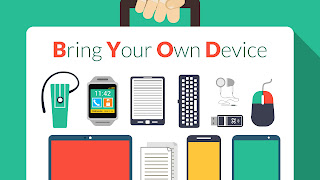Twitter Feed
Cloud Computing as a Strategic Asset
For some reason, this week seems to have more in it than most. While the steady stream of briefing request seem to be increasing, the post briefing discussions also seem…
Vivek Kundra: “Engage the American People in their Daily Digital Lives”
Today I attended a very impressive talk by the Federal CIO, Mr. Vivek Kundra at a Northern Virginia Technology Council Public Policy event. His open and “matter of fact” approach…
McKinsey vs. Booz Allen Hamilton !
A community skirmish reminiscent of the recent “manifestogate” has apparently erupted around the McKinsey & Co. report “Clearing the air on cloud computing“. Booz Allen Hamilton Principals Mike Cameron and…
Oracle Buys Sun!!
Swooping in from nowhere, Oracle buys Sun for $7.4B!! “This morning, the companies announced that they’d struck a deal worth $7.4 billion or $5.6 billion net of Sun’s cash and…
Aneesh Chopra Nominated For Federal CTO
Although Aneesh Chopra is a new name for most, he is well know in Virginia as Governor Tim Kaine’s Secretary of Technology. For the Commonwealth, he was charged with leading…
Could Cloud Computing Cost More?
In a recent conference, analyst William Forrest says that large companies could end up paying more than twice as much by using cloud based services. According to a Forbes.com report,…
Cisco’s Cloud Computing Strategy
A couple of weeks ago, Krishna Sankar provided a glimpse into Cisco’s cloud computing strategy in a presentation titled “A Hitchhiker’s Guide to the Inter-Cloud” . The presentation outlined the…
NCOIC and Cloud Computing: An Update
As the NCOIC gets it’s arms around this new paradigm, the Cloud Computing Working Group has focused on establishing a roadmap for providing value to the industry. Using the established…
SUN-IBM Talks Breakdown
As reported in multiple sources today, including Reuters, Sun has apparently rejected a purchase offer by IBM. “Shares of Sun Microsystems Inc tumbled 22.5 percent after it rejected a $7…
Former DoT CIO on Cloud Computing
Last month, former Transportation Department CIO Dan Mintz offered his views on cloud computing to Eric Chabrow, Managing Editor of Government Information Security. According to Mr. Mintz, there is currently…
- Increased employee mobility (63%), satisfaction (56%) and productivity (55%) dominate as the top drivers of BYOD. These employee related drivers are considered more important than reduced costs (47%).
- Security (39%) and employee privacy (12%) are the biggest inhibitors of BYOD adoption.
- 20% of surveyed organizations have suffered a mobile security breach, primarily driven by malware and malicious WiFi.
- Security threats to BYOD impose heavy burdens on organizations’ IT resources (35%) and help desk workloads (27%).
- Despite increasing mobile security threats, data breaches and new regulations, only 30% of organizations are increasing security budgets for BYOD in the next 12 months and 37% have no plans to change their security budgets.
- 72% – Data leakage/loss
- 56% – Unauthorized access to company data and systems
- 54% – Downloading of unsafe apps or content
- 52% – Malware
- 50% – Lost or stolen devices
- 49% – Vulnerability exploitation
- 48% – Lack of control on endpoint security
- 39% – Infrequent software updates
- 38% – Compliance
1. Create your policy before procuring technology: To effectively use mobile device management (MDM) technology for employee owned devices Policy must precede technology. Also note that these policies will have broad corporate-wide implications for IT, HR, legal, and security.
- Mobile device management
- Application security assessments
- Application testing services
- Application source code security assessments; and
- Embedded device security.
This post was brought to you by IBM Global Technology Services. For more content like this, visit ITBizAdvisor.com.
( Thank you. If you enjoyed this article, get free updates by email or RSS – © Copyright Kevin L. Jackson 2017)
Cloud Computing
- CPUcoin Expands CPU/GPU Power Sharing with Cudo Ventures Enterprise Network Partnership
- CPUcoin Expands CPU/GPU Power Sharing with Cudo Ventures Enterprise Network Partnership
- Route1 Announces Q2 2019 Financial Results
- CPUcoin Expands CPU/GPU Power Sharing with Cudo Ventures Enterprise Network Partnership
- ChannelAdvisor to Present at the D.A. Davidson 18th Annual Technology Conference
Cybersecurity
- Route1 Announces Q2 2019 Financial Results
- FIRST US BANCSHARES, INC. DECLARES CASH DIVIDEND
- Business Continuity Management Planning Solution Market is Expected to Grow ~ US$ 1.6 Bn by the end of 2029 - PMR
- Atos delivers Quantum-Learning-as-a-Service to Xofia to enable artificial intelligence solutions
- New Ares IoT Botnet discovered on Android OS based Set-Top Boxes


